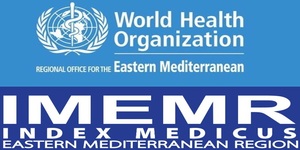Organizational Readiness for Change: A Case Study on Change Drivers and Inhibitors from Oman’s Health Professions Education Institutions
DOI:
https://doi.org/10.36321/kjns.vi20211.429Keywords:
Change management, Learning organization, Organizational change, PARIHS framework, Transition managementAbstract
Background: A study in 2014 on systems and processes needed to enhance the quality of health professions education during a period of transition at the Ministry of Health Educational Institutes; now known as Oman College for Health Sciences and the Higher Institute for Health Specialties, revealed positive expectations of staff towards the upgrade to a four-year college. However, staffs were uncertain about how they would manage the change, resulting in adverse psychological impact. The purpose of this study was to evaluate the overall readiness for change at Oman College of Health Sciences (OCHS) and the Higher Institute for Health Specialties (HIHS) during its second phase of transition.
Aim of the study: to evaluate the overall readiness for change at Oman College of Health Sciences (OCHS) and the Higher Institute for Health Specialties (HIHS) during its second phase of transition.
Methodology: a mixed method case study approach was conducted during the period of August 2017 to March 2019. For the quantitative part of the study, the authors used the Organizational Change Readiness Assessment OCRA tool to explore the barriers and drivers regarding change implementation experienced by employees at (OCHS) during a period of transition. This was followed by semi-structured interviews with five participants in leadership position of OCHS and the HIHS.
Results: of 381 questionnaires distributed, 128 were completed; a response rate of 33.6%. The quantitative findings identified inhibitors that had the highest impact towards successful change implementation to be information processes, organizational structure and task processes, and human resources system, while the qualitative analysis resulted in two main themes, organizational readiness for change, and individuals’ readiness for change.
Conclusion: Based on the results, it was apparent that the existing change and transition management strategies require further planning. Study findings indicated that readiness for change was influenced by organizational and behavioral factors. Both aspects were accompanied by challenges and possible opportunities regarding change implementation.
Recommendations: This study recommended that other future studies should be conducted within the scope of this study to include students and external stakeholders.
Downloads
Downloads
Published
How to Cite
Issue
Section
License
Copyright (c) 2021 Nada Al Moosa, Deena AL Asfoor, Reem AL Alawi

This work is licensed under a Creative Commons Attribution 4.0 International License.













